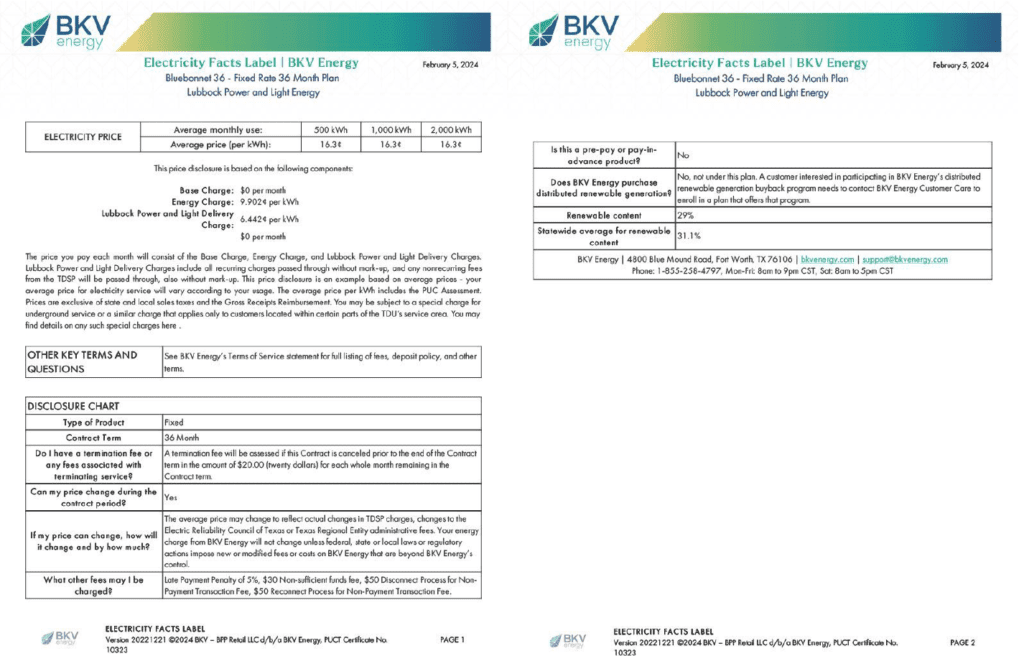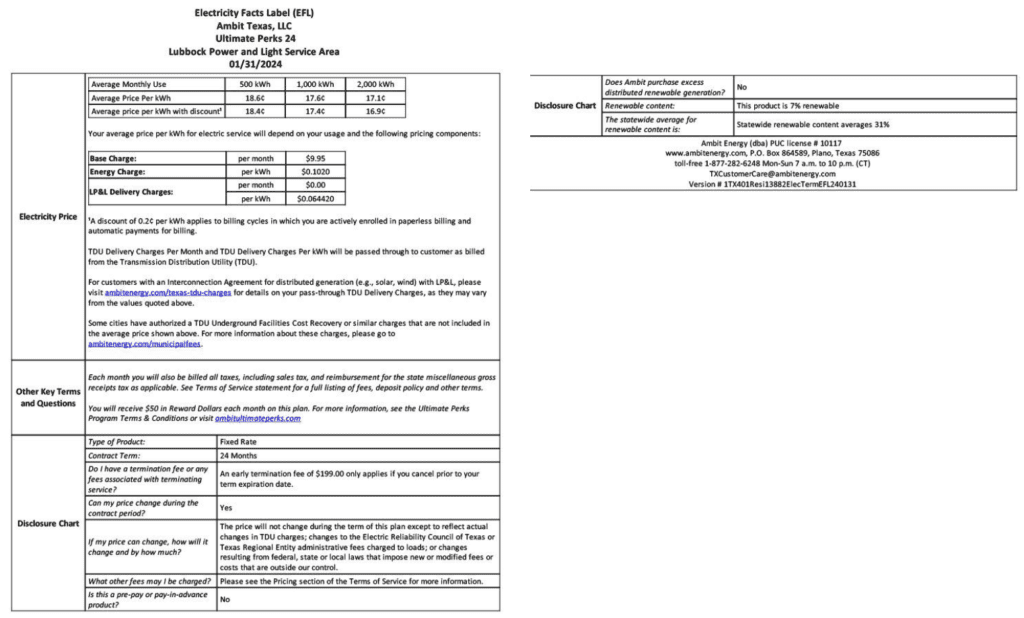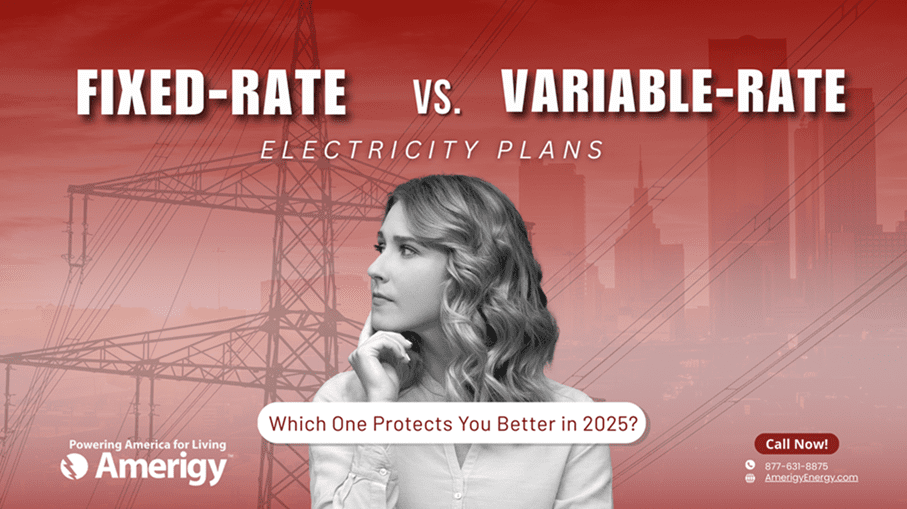
ERCOT Expects Tight Grid Conditions, Requests Conservation Tuesday, January 16, from 6 a.m. to 9 a.m. CT
January 16, 2024
The Five Key Skills Every Leader Needs to Master
February 9, 2024As Lubbock transitions to a deregulated electricity market, residents now face the critical task of selecting an energy plan by February 15. However, this process is mired in confusion, particularly due to misleading information about energy rates. Understanding the complexities of your electricity plan is essential to ensure you are not overpaying or falling victim to hidden fees. If you are quoted a rate of 9 cents or as cheap as 11 cents, that’s definitely not the entire amount. No one is giving it away, so be sure and ask for the EFL.
The key to making an informed decision lies in comprehending the Electricity Facts Label (EFL). The EFL is a document that outlines the specifics of your electricity plan, including rates, contract terms, and additional fees.
To read an Electricity Facts Label (EFL) effectively, it’s crucial to understand its key components, which provide comprehensive information about your electricity plan. Here’s a guide on how to decipher an EFL:
- Average Monthly Use: Shows your household’s electricity consumption in tiers (e.g., 500 kWh, 1000 kWh, 2000 kWh). It helps you understand which tier your usage falls into, influencing the rate you pay.
- Average Price per kWh: Displays the rate you’ll pay per kWh within each usage tier, factoring in all charges and fees.
- Base Charge: A fixed monthly fee covering operational costs, not varying with your usage.
- Energy Charge: The rate the provider charges for the electricity you use, separate from other fees.
- Monthly Bill Credit: Details any credits you’ll receive on your bill, often tied to your usage falling within certain ranges.
- TDU Charges: Charges from your Transmission and Distribution Utility (TDU) for delivering electricity and maintaining infrastructure. Includes fixed and per kWh charges.
- Type of Product: Indicates whether your plan is a fixed rate, variable rate, or indexed rate.
- Contract Term: Duration of your contract, commonly in 12, 24, or 36 months.
- Early Termination Fee (ETF): The fee, if any, for cancelling your contract early.
- Price Change Possibility: Whether and how the price might change during your contract.
- Additional Fees: Outlines any other possible charges or deposits.
- Excess Renewable Generation Purchase: Indicates if the provider buys back excess energy from personal generation systems like solar panels.
- Renewable Content: Shows the percentage of renewable energy included in your plan.
- Statewide Average for Renewable Content: The average renewable content percentage for plans in your state.
- Contact Information: Provider’s contact details for inquiries or issues.
By thoroughly reviewing each section of the EFL, you’ll gain a comprehensive understanding of your energy plan, enabling you to make an informed decision and potentially save on your energy costs.
Two examples can be found below:






